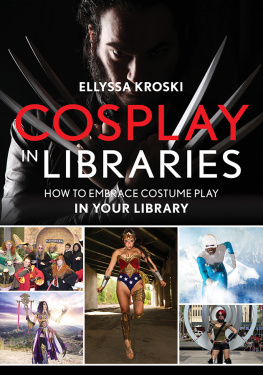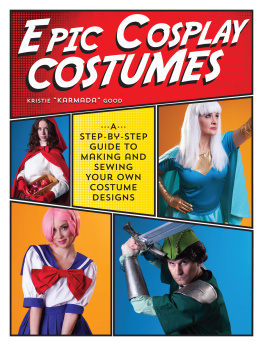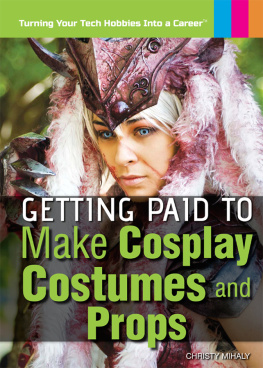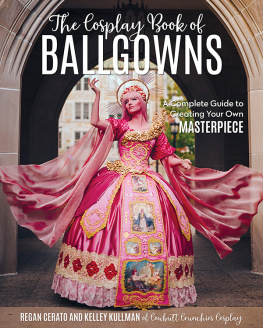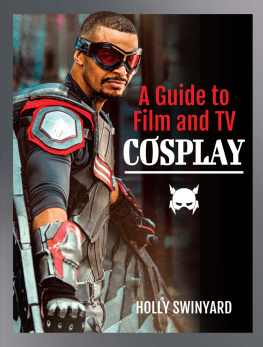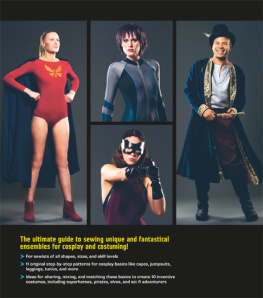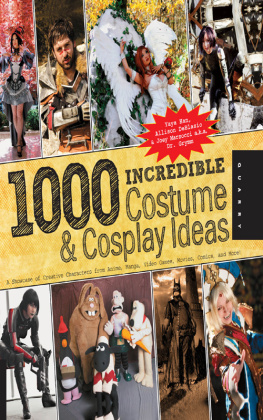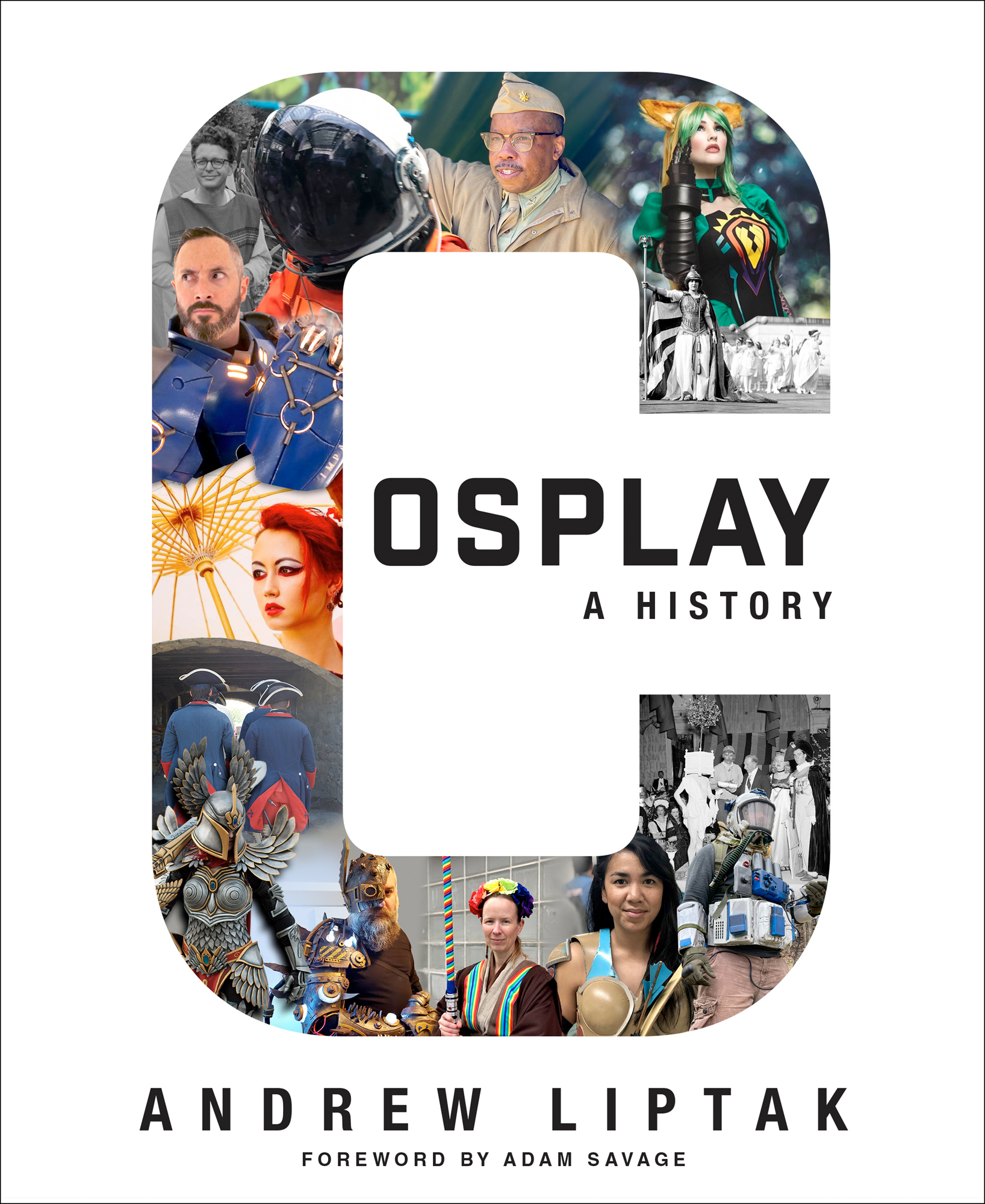Contents
Guide
Cosplay: A History
Andrew Liptak
Foreword by Adam Savage
THE BUILDERS, FANS, AND MAKERS WHO BRING YOUR FAVORITE STORIES TO LIFE
To Bram and Iris: I hope that you never lose the curiosity, excitement, joy, and wonder that I see in you every day.
FOREWORD BY ADAM SAVAGE
W hat the hell is cosplay, and how is it different from just putting on a costume? The answer seems tricky, but in my opinion, its only tricky if youre thinking of cosplay as a hobby. Its not. Cosplay is expansive. Its a bona fide art form, and an inclusive onetheres precious little gatekeeping overall.
And hobby is an awful word. It slinks around our conversations, laden with negative connotations. Its often useless and has a strange implied relationship with work, in that a hobby could never be important like work is. Everyone agrees, I think, that hobbies are generally considered good. But we as a society tend to belittle them, and in doing so, were sequestering some of the most interesting cultural knowledge into a bucket labeled dumb stuff. I reject this way of thinking entirely. Im in charge of the complex machine that is me, and if part of the maintenance of that machine means I find peace and solace and quietude in an activity like making, commissioning, rehearsing, adjusting, and performing in costume, thats not an insignificant thing.
For me, cosplay is most simply described as the practice of wearing a costume with the possibility that something important (aesthetically, emotionally, philosophically, socially, etc.) might happen during the wearing of that costume. Like all art, it can be produced and consumed in countless different ways, and like all art, cosplay is about transformation and transmission.
The transformation is real: putting on these costumes is frequently transformative and sometimes transcendent. We all like wearing things that make us feel good. Im sure, reader, that youve experienced a positive emotional reaction to a particular piece of clothing: the warmth of a heavy coat, that shirt you know you look great in, or new sneakers that make walking feel fun again. Cosplay is the practice of seeking out that high, but multiplied by a thousand.
The transmission is equally real. The performative aspect of cosplay is intrinsic to its nature; cosplay is a social art form. This is a practice that happens among us. We are literally pouring our bodies into shapes and narratives that hold meaning for us, then finding each other at events and showing each other what weve done. This is maybe the most illuminating revelation Ive had about cosplay: that its theater. I love theater. Its where I got my start. Theater is among the oldest and most important arts, but cosplay is theater in which the line between audience and performer isnt blurred; it just doesnt exist. Were all here for the show. Finally, like all art, our participation in it invariably teaches us about ourselves.
Andrew has done a great service to the world by writing this book and treating this beautiful art with the seriousness it deserves, despite cosplays penchant for absurdity.
INTRODUCTION
T hink back to the film that you love the most. Or that television show you binged in its entirety over a weekend, the book you stayed up all night reading, or the video game you spent countless hours working to beat. Remember the feeling you had where you could be part of that story, living in that world, if you only closed your eyes?
Thats the feeling that comes to life around the world as thousands of fans descend into their workshops, make their way to convention floors, scenic landscapes, or out onto the street to take candy from strangers. That feeling of love for a story is what motivates people to dress up as their favorite characters.
We are storytelling creatures, and for millennia, weve turned to props and costumes to help convey stories and our appreciation for them. Costuming has a long history, used in events from religious rites to theatrical performances to movies and television shows, to Halloween and fan conventions.
Ive been dressing up in costumes since I was little. Like most kids of my generation, I used Halloween as an opportunity to imagine that I was someone else. The earliest costume that I remember wearing was Batman (my younger brother was Robin), but the first one that I put together out of fascination for the character was a white-armored stormtrooper from Star Wars: A New Hope.
My wish to become that stormtrooper was finally granted years later at my high schools end-of-the-year band concert. Id played trumpet in my middle and high school bands for six years, and just about every day since Id joined, Id pestered the schools band director, Chris Rivers, to let us play the music from Star Wars. That spring hed relented, and for months wed been practicing arrangements of John Williamss music. As the concert approached, I realized that we could make it even cooler, beyond just playing the iconic music. We needed to bring Star Wars into the auditorium.
This concert was the culmination of my obsession with the franchise, which first took root in the spring of 1997, when my father brought me to the theater to see the special-edition rereleases of A New Hope, The Empire Strikes Back, and Return of the Jedi. I distinctly remember my twelve-year-old self staring out the window on the ride home after each screening, thinking about how cool the troopers looked and imagining how it might feel to wear such a costume.
With the special editions I was hooked, endlessly rewatching the trilogy on VHS, reading and rereading the tie-in novels, and dressing up as Luke Skywalker for Halloween. For years I fantasized about building my own suit of stormtrooper armor. I thought that my shop class might be an opportunity to craft something, but shaping sheet metal into elaborate curves proved a daunting task. So I scoured the internet for other ideas, discovering various forums and how-to sites, which showed that not only was it possible, but people actually made their own armor. It was while I was in high school that I came across some of those people: a group of fans that called itself the 501st Legion.
I first encountered the Legion in the pages of Star Wars Insider, which profiled the dedicated fans who dressed up as stormtroopers, scout troopers, and even Darth Vader. I knew that I needed to find out more about the group, and I was determined to invite them to that upcoming spring concert. With the blessing of Mr. RiversIm sure at that point just to get me out of his officeI sent an email to my local chapter, the 501st New England Garrison, outlining the situation in the hope that just one of their members would respond.
Lo and behold, one did.
In 2003, Scott Allen resided in Rhode Island, a five-hour drive from central Vermont. He emailed me back, saying that he would be happy to attend the concert in armor. On the day of the concert, he showed up, plastic tote in tow, and for the first time, I got to see a real, live stormtrooper. As my classmates trickled into the music center before the concert, they gawked at the sight of this random guy clad in a gleaming white costume.
Onstage, we launched into John Williamss The Imperial March, and Scott marched down the aisle in his armor. The audience went nuts.
That 2003 concert is my own personal origin story. Armed with a bonus from my job at a summer camp a month later, I mailed Scott a check. Weeks later, a big brown box showed up at my home, and I remember my astonishment as I pulled each gleaming piece of white plastic out, one by one.


